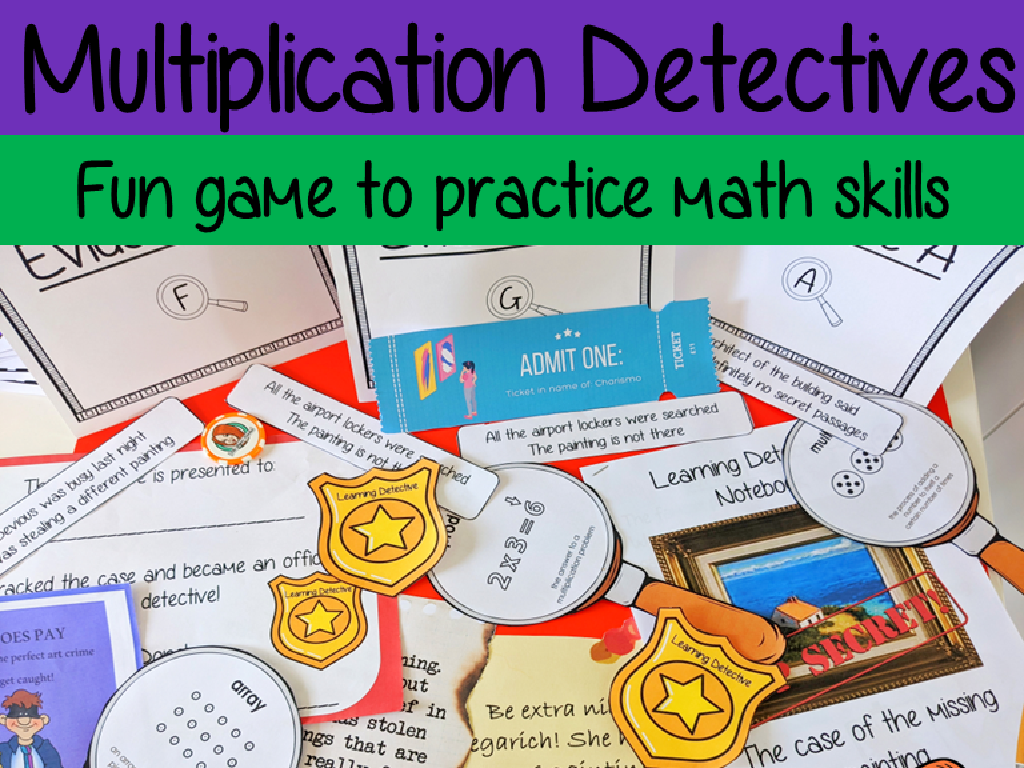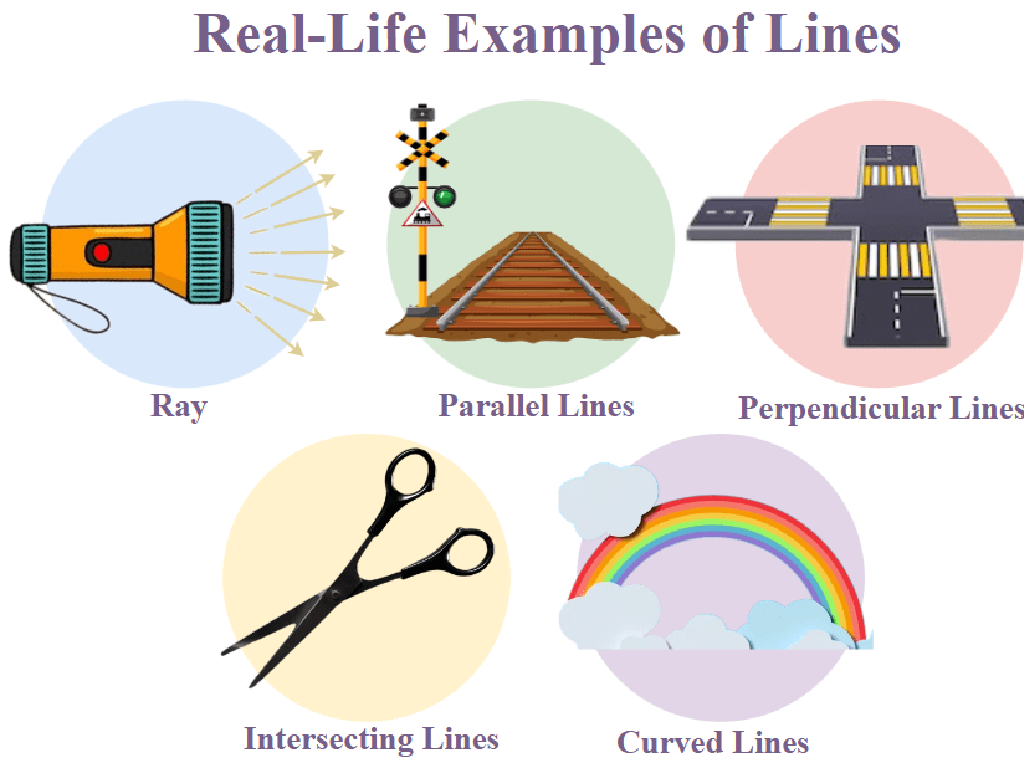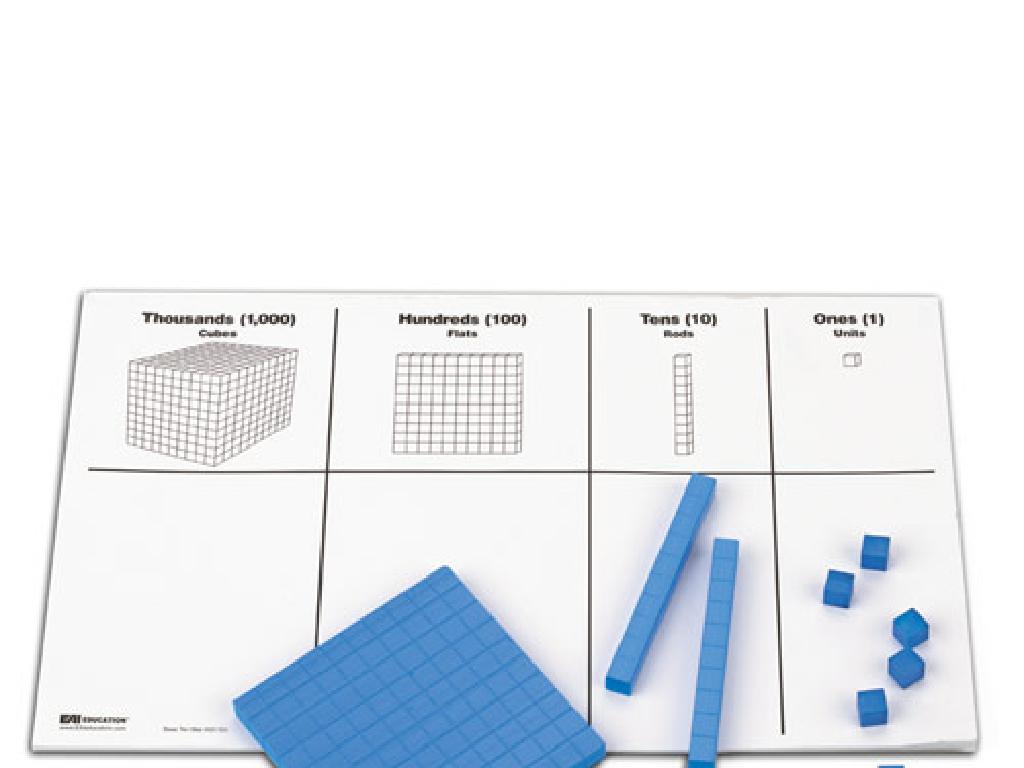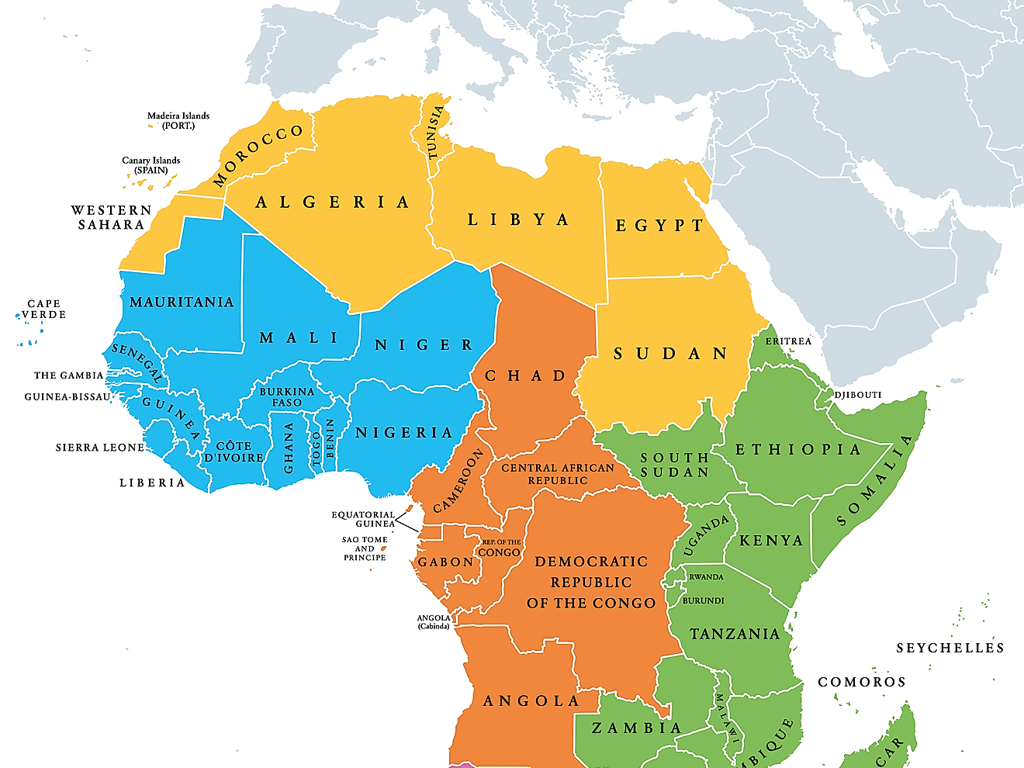Multiply Fractions By Whole Numbers
Subject: Math
Grade: Fourth grade
Topic: Multiply Fractions And Whole Numbers
Please LOG IN to download the presentation. Access is available to registered users only.
View More Content
Multiplying Fractions by Whole Numbers
– Understanding fractions basics
– A fraction represents a part of a whole.
– What is multiplication?
– Multiplication combines equal groups.
– Steps to multiply a fraction by a whole number
– Multiply the top number by the whole number.
– Practice with examples
– Example: 1/4 x 3 = 3/4 (3 groups of 1/4)
|
Begin with a review of what fractions represent, ensuring students are comfortable with the concept of parts of a whole. Then, transition to explaining multiplication as the process of combining equal groups. To multiply a fraction by a whole number, guide students to multiply the numerator (top number) by the whole number while keeping the denominator (bottom number) the same. Provide several examples and visual aids to help solidify the concept. Encourage students to draw pictures of fractions being multiplied to better understand the process. Finish with practice problems to reinforce the lesson.
Visualizing Fractions with Pizza
– Fractions as parts of a whole
– Imagine a pizza cut into equal parts; each part is a fraction of the whole pizza.
– Visual example: pizza slices
– Picture a pizza with 8 slices. Each slice is 1/8 of the pizza.
– Each slice is a fraction
– If you have one slice, you have 1/8. What if you have 4 slices?
– Multiplying slices by a number
– If you take 4 slices, you have 4 times 1/8. Let’s multiply to find out how much pizza that is!
|
This slide is designed to help students visualize the concept of fractions using a familiar example: pizza. Start by explaining that fractions represent equal parts of a whole, using a pizza cut into slices as an illustration. Each slice represents a fraction of the pizza. Show how each slice is a part of the pizza, and if you have multiple slices, you have multiple fractions of the pizza. Then, introduce the concept of multiplying fractions by whole numbers by asking what happens if you take several slices of pizza, effectively multiplying the fraction by a whole number. This visual representation will help students grasp the concept of multiplying fractions by whole numbers in a tangible way.
Understanding Whole Numbers
– Whole numbers as complete units
– Examples: 1, 2, 3, etc.
– Number line demonstration
– A visual tool to show distance between whole numbers
– Importance in fraction multiplication
– Whole numbers multiply the numerator of a fraction
|
This slide introduces the concept of whole numbers as the foundation for understanding how to multiply fractions by whole numbers. Emphasize that whole numbers are not fractions or decimals; they represent entire things without parts. Use a number line on the board to visually demonstrate the spacing and sequence of whole numbers, which can help students grasp the concept of counting and spacing in a linear format. Explain that in the context of multiplying fractions by whole numbers, the whole number will be used to multiply the numerator of the fraction, effectively ‘scaling up’ the fraction by that whole number. Encourage students to think of whole numbers as ‘groups of’ when multiplying with fractions.
Multiplying Fractions by Whole Numbers
– Multiplication as repeated addition
– Example with whole numbers
– 3 x 4 means adding 4 three times: 4 + 4 + 4
– Relating to fractions
– Multiply 2/3 by 3: 2/3 + 2/3 + 2/3
– Practice with fractions
– Let’s try 4 x 1/2 together in class!
|
This slide introduces the concept of multiplication as repeated addition, which is a foundational idea for understanding how to multiply fractions by whole numbers. Start with a simple example using whole numbers to solidify the concept. Then, show how this concept applies to fractions by demonstrating that multiplying a fraction by a whole number is the same as adding the fraction to itself that many times. Provide a clear example with fractions, and prepare to guide the class through practice problems where they will apply this method to multiply fractions by whole numbers.
Multiplying Fractions by Whole Numbers
– Start with a whole number
– Multiply the top number (numerator)
– If we have 3/4 x 2, multiply 3 (numerator) by 2
– The bottom number (denominator) stays
– Visual example to demonstrate
– Picture 3/4 of a pizza eaten twice
|
This slide is aimed at teaching fourth graders how to multiply fractions by whole numbers. Begin by explaining that the process is similar to multiplying whole numbers, but with an extra step to keep the fraction’s denominator the same. Emphasize that only the numerator (the top number of the fraction) gets multiplied by the whole number. Use visual aids, such as a pizza or pie chart, to help students visualize the concept. For example, if you have 3/4 of a pizza and you eat that amount twice, you have eaten 3/4 x 2 portions of pizza. This visual representation will help students grasp the concept more concretely. Encourage students to practice with different fractions and whole numbers to become comfortable with the process.
Multiplying Fractions by Whole Numbers
– Example 1: Multiply 1/4 by 3
– 1/4 x 3 equals 3/4, because 1/4 added 3 times is 3/4
– Example 2: Multiply 2/5 by 2
– 2/5 x 2 equals 4/5, because 2/5 added 2 times is 4/5
– Work through examples together
– Understand each step clearly
|
This slide is designed for a collaborative class activity where students practice multiplying fractions by whole numbers. Start with Example 1 by illustrating that multiplying a fraction by a whole number is the same as adding the fraction to itself that many times. Show that 1/4 x 3 is the same as 1/4 + 1/4 + 1/4, which equals 3/4. Then, move to Example 2 and apply the same concept to show that 2/5 x 2 is the same as 2/5 + 2/5, which equals 4/5. Encourage students to participate in solving the problems and ensure they understand each step before moving on. The goal is for students to grasp the concept of multiplication as repeated addition, specifically when it involves fractions and whole numbers.
Group Activity: Fraction Multiplication
– Create fraction multiplication problems
– Swap problems with a classmate
– Solve your partner’s problem
– Discuss answers with the class
|
This interactive group activity is designed to engage students in creating and solving their own fraction multiplication problems. It encourages collaboration and peer learning. Start by dividing the class into pairs or small groups and provide them with materials to create problems involving the multiplication of fractions by whole numbers. Once they have created their problems, have them exchange these with another group or partner. After solving the exchanged problems, bring the class together for a discussion, allowing students to explain their solutions and thought processes. This will help reinforce their understanding of the concept and allow them to see different methods of solving the problems. Prepare to guide the discussion and clarify any misconceptions. Possible activities could include using visual aids, such as pie charts or grids, to represent fractions, or incorporating real-life scenarios that involve multiplying fractions by whole numbers.
Class Activity: Fraction Skits
– Form groups for skit creation
– Create a skit on multiplying fractions
– Show how to multiply a fraction by a whole number through a story
– Use props to illustrate fractions
– Example: Use pizza slices to represent fractions
– Present your skit to the class
|
This interactive class activity is designed to help students understand the concept of multiplying fractions by whole numbers in a fun and engaging way. Divide the class into small groups and assign each group the task of creating a short skit that demonstrates the multiplication of a fraction by a whole number. Encourage creativity in using props, such as paper cutouts or real objects like slices of pizza, to represent fractions visually. Each group will then present their skit to the class, allowing for a dynamic learning experience. Possible activities could include using different fractions and whole numbers for each group, or having some groups use improper fractions or mixed numbers to challenge advanced students. The goal is for students to visualize and internalize the multiplication process through acting it out.
Homework and Recap: Multiplying Fractions
– Complete the multiplication worksheet
– Solve problems multiplying fractions by whole numbers
– Review today’s fraction multiplication
– Go over the steps we learned to multiply fractions
– Ask questions if you’re unsure
– It’s okay to be confused, just be sure to ask for help!
– Practice makes perfect!
|
For homework, students will reinforce their understanding of multiplying fractions by whole numbers through a worksheet. During the recap, revisit the key points of today’s lesson, emphasizing the process of multiplying the numerator by the whole number and keeping the denominator the same. Encourage students to ask questions about any part of the lesson they found challenging. Provide examples and be ready to clarify any doubts. Remember to praise effort and remind students that practicing these problems will help solidify their skills. For the next class, prepare to review the homework answers and discuss any common mistakes to ensure comprehension.





